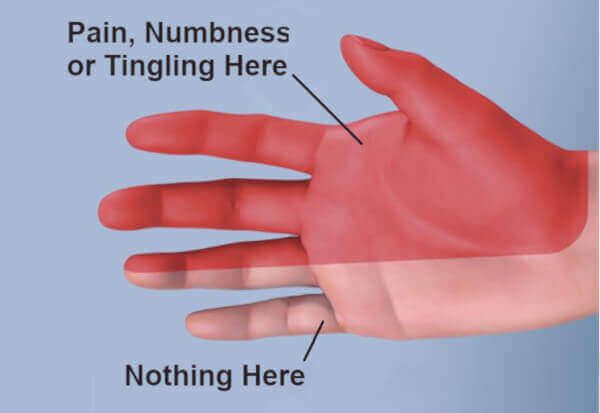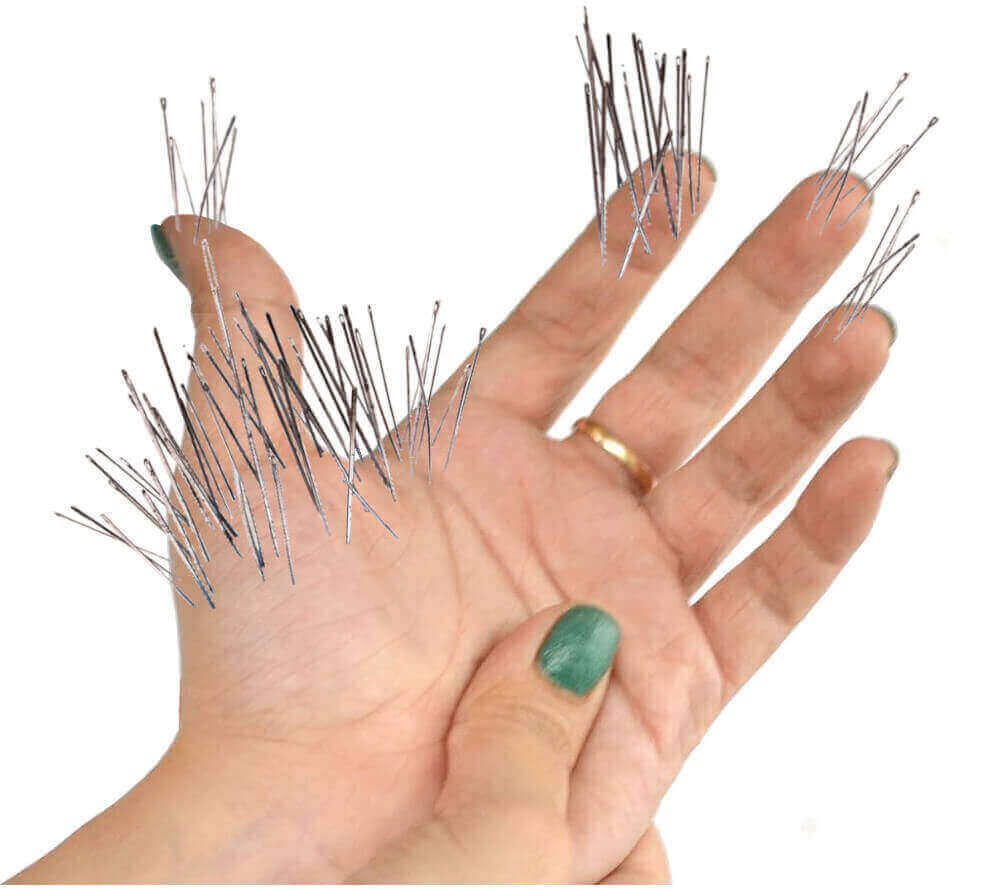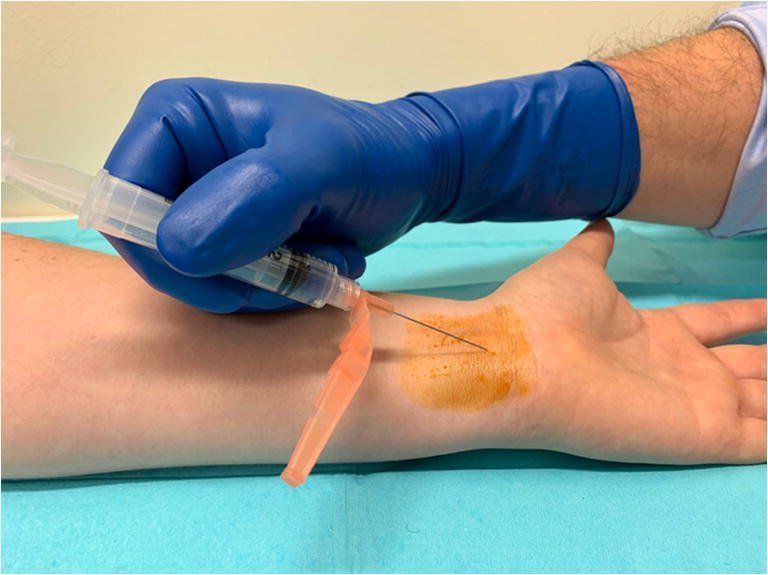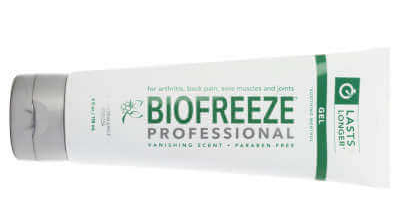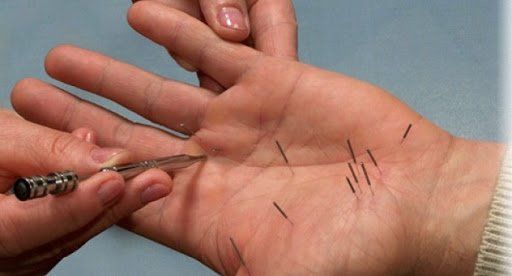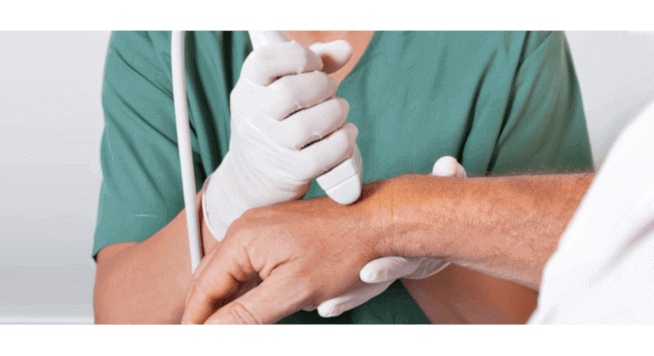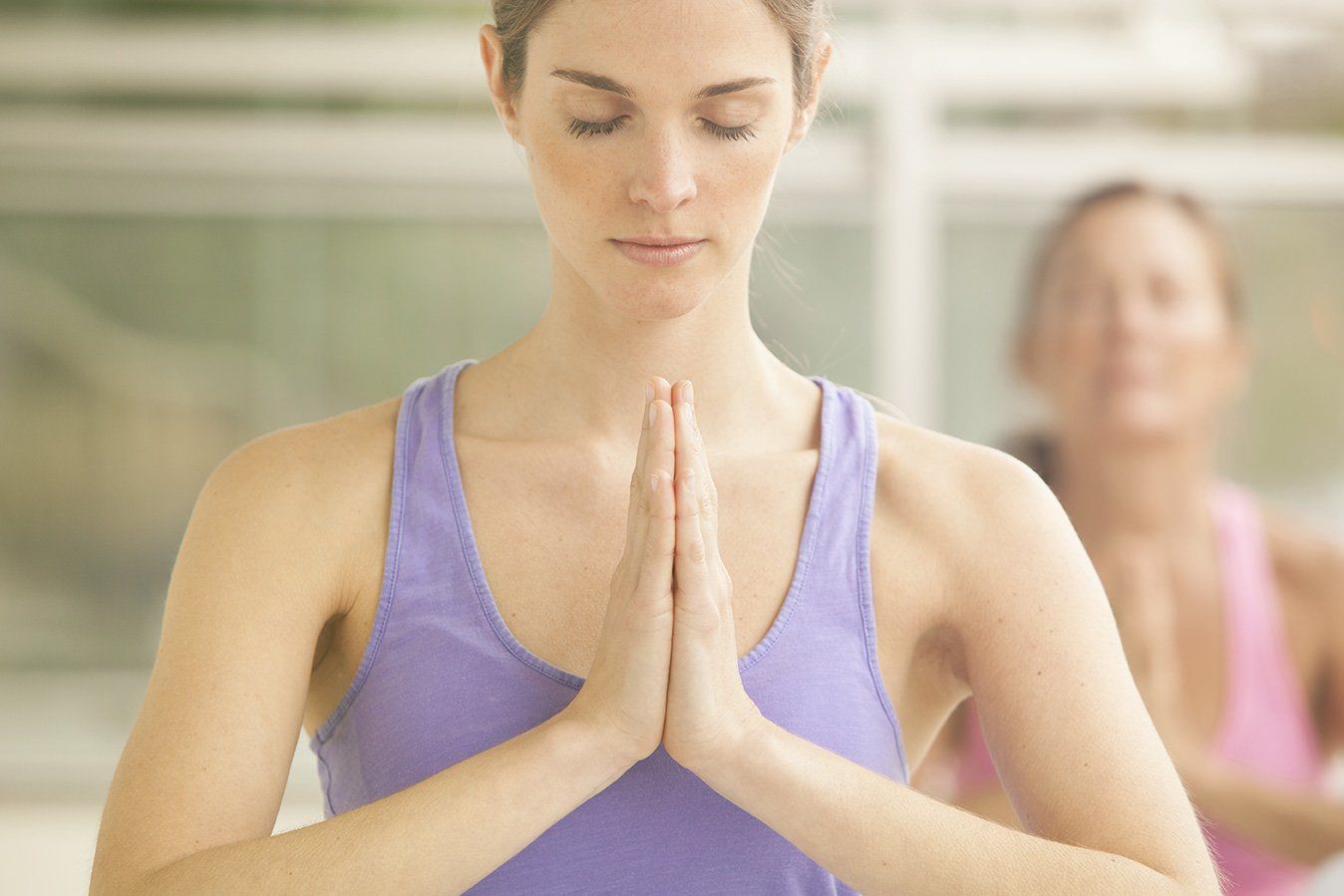Where Carpal Tunnel Pain Hurts Most
Table of Contents
- Overview
- Introduction
- What does carpal tunnel pain mean?
- What types of pain are felt?
- The 4 stages of carpal tunnel syndrome
- Mild stage
- Moderate stage
- Severe stage
- End stage
- Who gets carpal tunnel syndrome?
- How to relieve carpal tunnel pain
1) Pain medicines
2) Steroid shots
3) Ointments
4) Ice baths
5) Acupuncture
6) Ultrasound
7) Yoga
8) Night bracing
9) Rest
10) Stretching exercises
11) Myofascial massage
- What about carpal tunnel release surgery?
- Summary
- FAQs
- About
Overview
For many people, the area where carpal tunnel pain hurts most is the forefinger and thumb. The middle and ring fingers can also be affected, as can the palm of the hand. Along with the pain, many people feel other
symptoms of carpal tunnel syndrome in the same areas. These include numbness, tingling, burning, and soreness. Pain caused by carpal tunnel can also extend over the entire hand and into the wrist. Sometimes, when grasping an object, pain can shoot into the arm and up to the elbow. Other times, the shooting pain feels more like an electric shock. This article explains what that pain is all about, when it occurs, and how to treat it.
Introduction
Carpal tunnel syndrome is a common neurological disorder. It occurs in about 3 out of every 1,000 people in the USA. It causes symptoms like pain, numbness, tingling, and weakness in your fingers, hand, and wrist.
Carpal tunnel syndrome happens when your median nerve is damaged inside the wrist joint. The median nerve helps you move your fingers and provides feeling in the fingers and hand. But damage can occur when tissues around it are irritated and swell. This swelling exerts pressure on the nerve, crushing it and causing damage. The damage sends incorrect signals to your brain. Hence the feelings of pain, numbness, and tingling.
Talk with your doctor if you have these sensations in your fingers or hand. That's because treating it early can help eliminate it for good. Usually, carpal tunnel syndrome responds well to conservative treatment. But if you ignore it, it can progress and permanently damage your median nerve.
What does carpal tunnel pain mean?
Carpal tunnel pain in the hand or fingers is just one sign that you have
carpal tunnel syndrome. This is a progressive neurological disorder that starts deep inside the wrist joint. And it's one of the most common disorders in America.
Carpal tunnel pain is the result of a damaged nerve inside the wrist joint. That nerve, the
median nerve, is a major nerve of the hand. The damage happens when surrounding tissues inflame and swell. Eventually, the swelling crushes the median nerve, causing all the symptoms of carpal tunnel syndrome.
The swelling around the nerve can be caused by several factors. Chief among them is flexor tendon inflammation. These tendons are responsible for curling your fingers.
Harmful activities like rapid and repetitive movement of your
fingers can irritate them. This is called
repetitive stress injury or RSI.
Therefore, the pain you feel is the way your body is saying that carpal tunnel syndrome has begun.
What types of pain are felt?
Carpal tunnel pain normally follows certain patterns. Those patterns change as the condition worsens.
For the most part, when carpal tunnel syndrome is in the
mild stage, pain symptoms are also mild. The main distinguishing feature of mild carpal tunnel syndrome is that pain occurs when your hand is resting, but not working. This distinguishes it from
wrist tendonitis, which hurts when your hand is working and not at rest.
You can take
this self-test to see if you have carpal tunnel syndrome or wrist tendonitis.
Carpal tunnel pain can have different characteristics from person to person. It can be intermittent or constant, widespread or focal. Pain can also vary in intensity. It can range from a simple annoying discomfort to a fearful, punishing pain.
The pain produced by carpal tunnel syndrome can have the following qualities:
- dull
- sharp
- aching
- throbbing
- burning
- pounding
- grinding
- shooting
- deep
- superficial
Most carpal tunnel patients feel more than one of these painful sensations. They can occur at the same time or at different times of the day.
The 4 stages of carpal tunnel syndrome
Mild stage
The mild stage of carpal tunnel syndrome is when most people believe they simply have an annoying problem when they overwork their hands. They often don't realize they're on the road to a progressive disorder that gets more difficult to treat as time goes on.
The mild stage begins as barely noticeable. Symptoms like pain, numbness or tingling only appear while trying to sleep. Patients have to wake up to shake out the numbness or rub out the pain.
It's possible for this stage to last for years. But more commonly it only lasts for 1-2 months until it worsens. This stage is also the easiest to treat.
Moderate stage
The moderate stage is where carpal tunnel pain or
other symptoms are felt during the daytime. Symptoms are no longer confined just to when trying to rest or sleep.
Symptoms in the moderate stage also generally include loss of
grip strength and reduced finger dexterity. Patients begin to drop things or find it difficult to hold items like a coffee mug. Many also feel clumsy tying a shoelace or buttoning a shirt. Picking up keys or coins is awkward.
Usually the moderate stage is when patients see symptoms appear on the
other hand
as well. This is called
bilateral carpal tunnel syndrome. It occurs over 80% of the time.
Without treatment, moderate stage carpal tunnel syndrome can last for several months. It's rare for this stage to last for more than a year before it advances to the severe stage.
Severe stage
The
severe stage of carpal tunnel syndrome is when most patients seek help for their condition. It's also the stage that's most difficult to treat. For instance, treating the mild or moderate stages has nearly total success. But treating the severe stage cuts that success rate significantly.
The symptoms during the severe stage are similar to previous stages,
but they're far more intense.
And there is no rest from the constant and unrelenting pain. Carpal tunnel pain is described as punishing, cruel, fearful, terrifying, grueling, vicious, and killing.
Severe carpal tunnel pain usually is accompanied by crushing numbness. One or both of these symptoms cause many patients to exclaim,
"I feel like cutting my hand off!"
Left untreated, severe stage of carpal tunnel syndrome can last months or years. However,
treatments are still available even for severe carpal tunnel syndrome.
End stage
Just when you thought it couldn't get worse, carpal tunnel can advance to the end stage. This stage of progression is the last stop for this disorder. That's because in prior stages, the median nerve still had some life left within it.
But in the end stage, the median nerve dies. Ironically, with the death of the median nerve, pain is no longer as intense. However, numbness or tingling may persist forever.
Generally, most of your grip strength is gone. The muscles at the base of your thumb (thenar muscles) degenerate, atrophy or "waste". This can be seen where the normally-plump bump at the base of your thumb flattens out, wrinkling the skin over it.
Thumb strength is lost as a result. Most times the hand begins to take the form of a claw (called "claw hand").
When carpal tunnel pain diminishes in the end stage it's not good news. It means the condition is no longer treatable by any means (not even surgery).
Who gets carpal tunnel syndrome?
Anybody can get carpal tunnel syndrome. But you're at especially high risk if you work hard with your hands. The biggest contributor to getting carpal tunnel syndrome is a "high risk" occupation which requires
certain harmful hand activities. These include rapid and repetitive finger motions, forceful or prolonged gripping, prolonged grip-and-release, and prolonged and forceful pinching motions. This means the jobs most likely to result in carpal tunnel are:
How to relieve carpal tunnel pain
You can relieve carpal tunnel symptoms like pain and numbness temporarily or permanently. Temporary treatments address the symptoms only. But permanent treatments attack the source of the problem; that is,
tissue inflammation.
Below are the most common carpal tunnel pain remedies. They are listed (top to bottom) from TEMPORARY
to PERMANENT relief treatments.
1) Pain medicines (temporary relief)
2) Steroid shots (temporary relief)
3) Ointments (temporary relief)
4) Ice baths (temporary relief)
5) Acupuncture (temporary relief)
6) Ultrasound (temporary relief)
7) Yoga (temporary relief)
8) Night bracing (permanent relief)
9) Rest (permanent relief)
10) Stretching exercises (permanent relief)
11) Myofascial massage (permanent relief)
What about carpal tunnel release surgery?
Contrary to what most patients are told, carpal tunnel release surgery is a
temporary
treatment. The reason is because surgery does not eliminate the root cause of carpal tunnel pain and other symptoms; that is, adhesions and restrictions on flexor tendons.
This is why
about 50% of patients who had carpal tunnel surgery experience return of symptoms within 2 years. Also,
3% to 25% of patients never see symptoms relief whatsoever after surgery.
In all, less than 25% of patients are satisfied with their results by year 3 because all of their symptoms have been relieved. In other words, fewer than 25% of patients see permanent relief.
These published statistics beg the question, "In light of the
permanent
nonsurgical options available, is surgery worth the
cost,
pain, and
recovery time? This is why the
American Academy of Orthopedic Surgeons (AAOS) recommends trying all non-surgical remedies first, before considering carpal tunnel surgery.
Summary
The area where carpal tunnel pain hurts most is usually the thumb and first fingers. Sometimes the pain is accompanied with numbness, tingling, and weakness. Pain may also shoot up your arm to your elbow. Carpal tunnel pain can also be mild or intense, intermittent or constant. There are several treatment options to relieve carpal tunnel pain. Some are merely temporary pain relievers. But the permanent pain relievers attack the source of the problem, which is tendon inflammation caused by adhesions. Surgery is generally not a permanent treatment option due to the high rate of symptoms return.
FAQs
- Why is carpal tunnel surgery so popular if it's not a permanent solution?
Many doctors do not heed the advice from the AAOS, who recommend using nonsurgical remedies first. Also, insurance companies will pay for most of carpal tunnel surgery, but not for many of the conservatives remedies.
- Is is better to use multiple nonsurgical remedies at the same time?
Yes, multiple and simultaneous treatments are best. The best combination of remedies is rest, stretching exercises, night bracing, and myofascial release massage.
- Aside from straining you hand and fingers, what else can cause carpal tunnel?
By far, the most common reason for getting carpal tunnel syndrome is tendon inflammation from hand stress. But other conditions can be the underlying cause like pregnancy, rheumatoid arthritis, hypothyroidism, obesity, lupus, wrist fracture, ganglion cyst, and diabetes.
About


